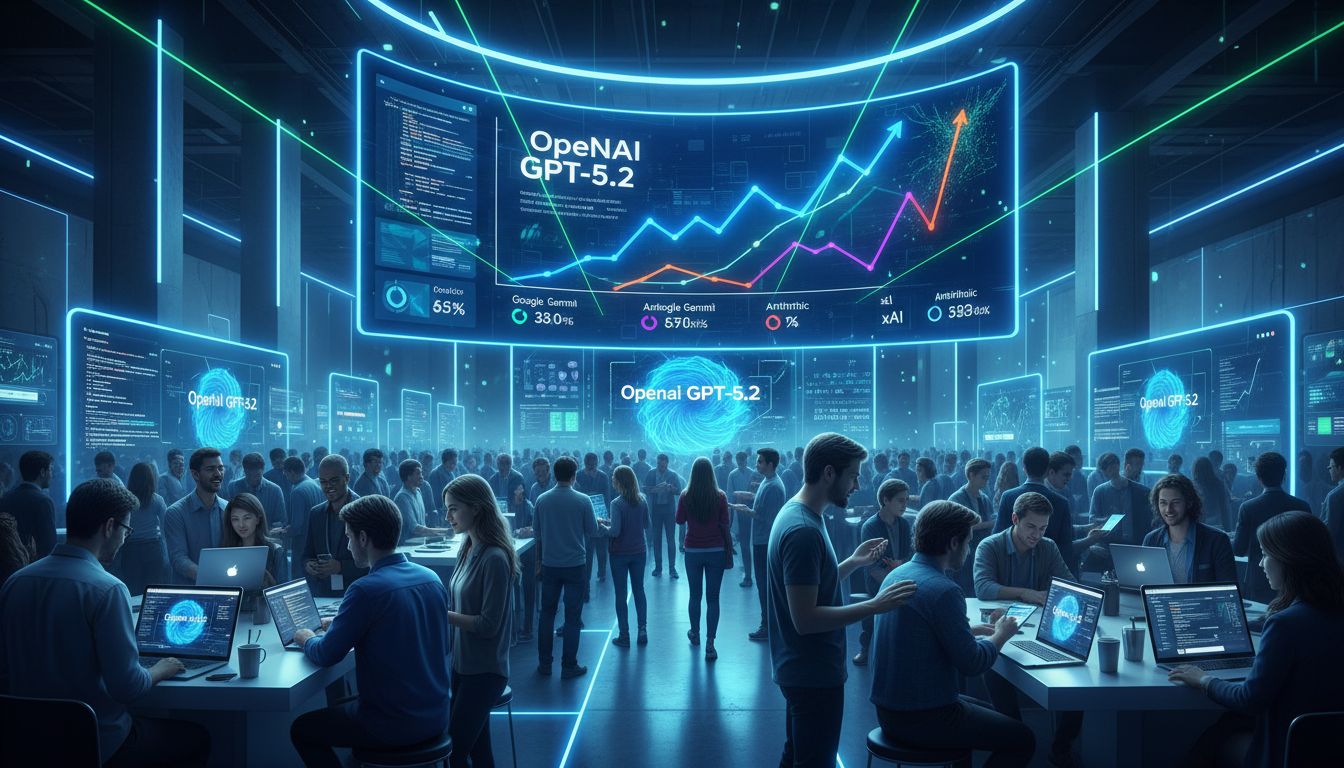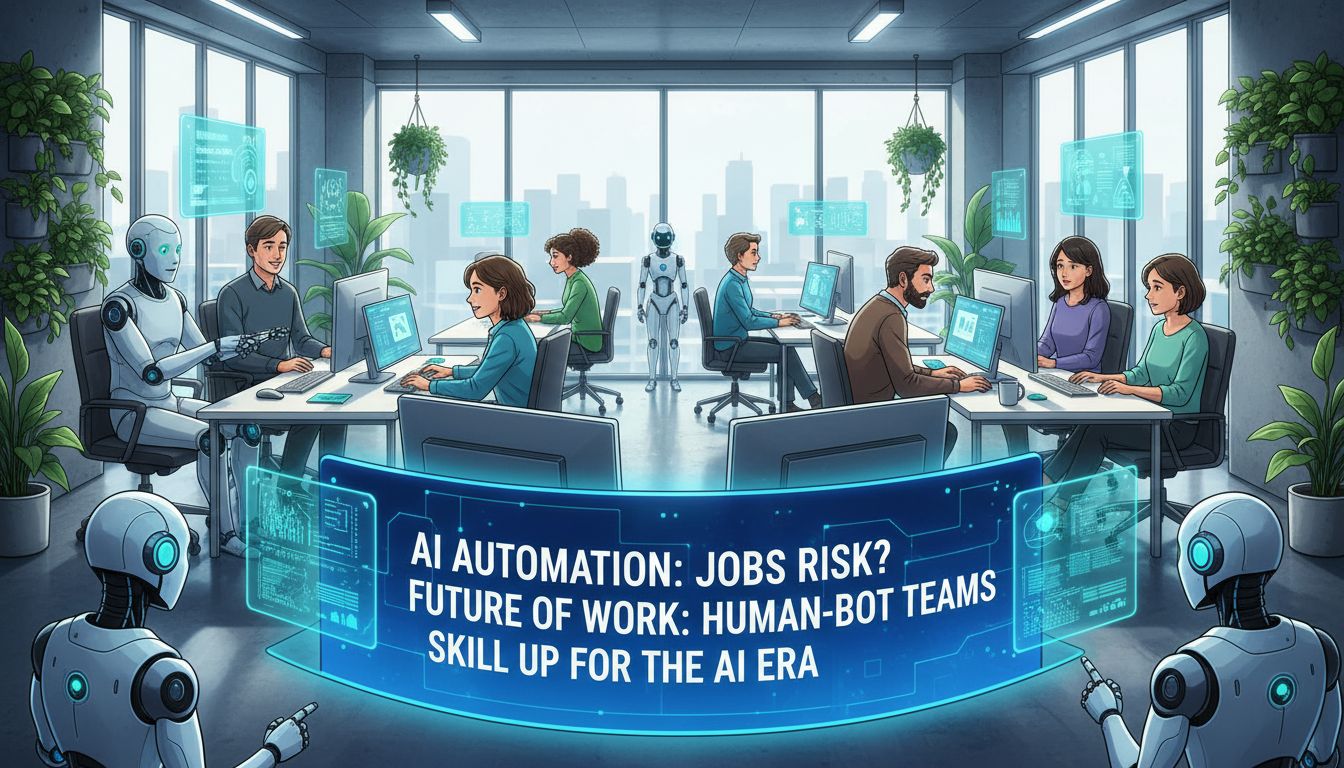Amazon AI Projects are no walk in the park, folks.
Navigating the intricate and constantly transforming landscape of AI can be a daunting task, particularly when Amazon is at the forefront. And when it comes to leading the pack? You guessed it – Amazon’s at the helm.
Diving into these projects is like diving headfirst into a pool filled with both opportunities and challenges. But hey, that’s what makes this field so darn exciting!
With Amazon AI Projects, we’re talking about cutting-edge technology changing our lives as we know them. Buckle up because this ride is going to be thrilling!
Table of Contents:
- Amazon’s Central AI Team: The Powerhouse behind the Ambitious Generative AI
- Expanding Large Language Model Efforts
- Ambitious Plans Ahead: Expanding Beyond Existing Models
- Bedrock by AWS: A Leap Forward in Generative AI Innovation
- Revolutionizing Customer Experience with Advanced Language Models
- Amazon’s Alexa Teacher Model 20B: A Game-Changer in Multilingual AI
- FAQs in Relation to Amazon Ai Projects
- Conclusion
Amazon’s Central AI Team: The Powerhouse behind the Ambitious Generative AI
With artificial intelligence (AI) shaping our future, Amazon is stepping up its game by forming a dedicated team for its most ambitious generative AI project. This central squad, led by Rohit Prasad, Alexa’s head scientist, aims to bring significant advancements in large language models (LLMs). Interestingly enough, this move aligns Amazon with other tech giants like Google and Microsoft who are also making strides in generative AI research.
The Crucial Role of Rohit Prasad as Leader of the Central Team
Rohit Prasad brings immense expertise and knowledge to his role leading this newly formed central team. His experience will be vital in propelling their expansive LLM efforts forward. As someone who has been instrumental in developing key features that made Alexa one of the world’s favorite virtual assistants since 2016, he certainly seems poised well for the challenge ahead.
In addition, his leadership style coupled with strong technical acumen would help drive these projects from conceptualization through implementation, thereby setting the stage perfectly well not just for Amazon but also for its customers and stakeholders alike. With such promising prospects on the horizon, it surely makes us wonder about the exciting possibilities that lie ahead within the rapidly expanding artificial intelligence domain.
Pitting Against Other Tech Giants’ Efforts In Artificial Intelligence Domain
Tech titans like Google or Meta aren’t newbies when it comes down to pushing boundaries across different facets, including tools development, training AI models, or creating products powered by Generative AI technologies. However, what sets AWS-affiliated data scientists & developers apart lies within the practical solutions they offer tailored specifically towards the needs arising out of various businesses’ operations worldwide.
This includes everything right from introducing programs under the ‘Generative AI Innovation Center Program’ aimed at fostering collaboration amongst them while simultaneously accelerating enterprise innovation too.
In addition, they’ve pledged $100 million towards supporting promising startups working within the field via their ‘Amazon Pledges $100 Million Initiative’. These strategic moves show how serious Amazon Web Service customers are about leveraging the power held by Generative AI Innovation.
Amazon’s central AI team, led by Alexa’s head scientist, Rohit Prasad, is pushing the envelope in generative AI research. With a keen focus on large language models and practical business solutions, they’re set to revolutionize artificial intelligence while competing with tech giants like Google and Microsoft.
Expanding Large Language Model Efforts
The tech world is abuzz with Amazon’s latest move to amplify its artificial intelligence capabilities. The company has formed a dedicated team, led by Alexa’s head scientist Rohit Prasad, focusing on the development of expansive large language models (LLMs). This initiative marks another significant stride in the rapidly expanding artificial intelligence landscape.
Existing LLM projects within Amazon
Digging into what they’ve already accomplished, we find some impressive feats under their belt. Take Amazon Lex, for instance – an AWS service that leverages advanced deep learning functionalities like automatic speech recognition and natural language understanding to build conversational interfaces into applications using voice and text.
Moving further along this trail of innovation, there’s also Amazon Polly. It’s yet another example showcasing how cloud platform services can use state-of-the-art technologies to synthesize human-like speech. These offerings are just sneak peeks at what lies ahead in terms of AI possibilities via Amazon Web Services.
Future plans for expansive LLM development
This newly assembled central team isn’t here merely to maintain existing products; it aims higher than that. One such ambitious project involves building a more generalized model for Alexa – their home robot assistant – which could significantly enhance the user experience across all businesses run by Amazon.
Ambitious Plans Ahead: Expanding Beyond Existing Models
The future looks promising under Prasad’s leadership as he spearheads efforts towards making advancements beyond existing models. His vision is aligned firmly alongside Amazon’s pledge of a $100 million investment aimed at supporting research and education initiatives around the world, focused primarily on promoting inclusive and equitable advancement in the field of Artificial Intelligence.
With ongoing work in various aspects of Generative AIs ranging from foundational frameworks to product development applications, Amazon is undoubtedly setting the pace for the next generation of breakthroughs in the arena.
Amazon is taking giant strides in AI, with a dedicated team developing expansive large language models. Not content to rest on laurels of past successes like Amazon Lex and Polly, they’re aiming for more advanced applications. The future holds promise as Amazon leads the way in generative AIs, backed by substantial investment and visionary leadership.
Bedrock by AWS: A Leap Forward in Generative AI Innovation
The world of artificial intelligence is ever-evolving, and Amazon Web Services (AWS) isn’t missing a beat. In April 2023, they unveiled Bedrock – an API designed to make generative foundational AI models more accessible for developers and researchers.
Diverse Models Offered through Bedrock
AWS has always been about giving its users options. With Bedrock’s introduction, it continues this trend by offering diverse pre-trained models from leading entities like Stability AI or Anthropic alongside their own Titan series.
This approach doesn’t just benefit established tech companies but also serves as a boon for budding startups involved with generative AI projects who can now leverage these resources without having massive computational power on hand.
Titan Models: The Crown Jewel of Bedrock
In-house developed Titan series are part of what makes Bedrock stand out among other offerings in the market. These large language models have been trained using vast amounts of data sourced across the web, enabling them to understand and generate human-like text responses effectively. It’s not just simple comprehension or generation tasks either – Titan handles complex operations such as translation between multiple languages and summarization while maintaining the high-quality output standards expected from any product associated with Amazon Web Services’ nameplate.
Beyond that, making these powerful tools available via API means millions around the globe – be it Amazon Web Service customers or independent developers looking forward to harnessing the potential offered by Generative Artificial Intelligence – are just a few lines of code away from accessing cutting-edge technology directly on the cloud platform.
Revolutionizing Customer Experience with Advanced Language Models
The rise of advanced language models is changing the game in customer experience. These cutting-edge tools, fueled by artificial intelligence and machine learning, can comprehend and interact with human language like never before.
Why Advanced Language Modeling Matters for Boosting Customer Experience
In the current digital-focused consumer market, businesses are striving to provide individualized experiences that fit their customers’ requirements. That’s where advanced AI-powered language models, part of Amazon’s rapidly expanding artificial intelligence projects, come into play.
These powerful tools have an uncanny ability to decode complex linguistic patterns, which allows them to communicate effortlessly across different platforms. They understand queries accurately, provide relevant responses or suggestions – all contributing towards better engagement levels and satisfaction among users.
Beyond just providing accurate answers, though, these sophisticated large-scale models also possess the capability to learn from each interaction they handle. This continuous cycle of training AI models helps fine-tune future interactions based on past conversations – thus creating increasingly customized user experiences over time.
The Ripple Effect: Impact Across Various Business Sectors Operated by Amazon
Apart from boosting Alexa’s capabilities using generative AI, including tools such as ‘Alexa Teacher Model 20B’, Amazon has been integrating its advanced language modeling technology across various business sectors too – be it e-commerce operations or cloud services provided through Amazon Web Services (AWS).
- E-commerce stands out specifically here because enhanced natural-language search results mean more intuitive product recommendations during online shopping journeys; this could potentially lead to improved chatbot assistance resulting in superior customer service overall.
- If we consider AWS clients who use cloud-based applications for managing their businesses digitally, advancements brought about via building generative AI-powered apps may result in smarter virtual assistants capable of handling intricate tasks efficiently, thereby augmenting human productivity significantly within organizations.
Amazon’s AI-powered language models are transforming the customer experience by decoding complex linguistic patterns and learning from interactions. This not only enhances engagement but also personalizes user experiences over time. Furthermore, this technology is being integrated across various sectors, boosting e-commerce operations and augmenting productivity in cloud services.
Amazon’s Alexa Teacher Model 20B: A Game-Changer in Multilingual AI
In the realm of artificial intelligence, Amazon Web Services has made a groundbreaking advancement with its ‘Alexa Teacher Model 20B’. This multilingual model boasts an impressive twenty billion parameters, surpassing OpenAI’s GPT3.
Diving Deep into ‘Alexa Teacher Model 20B’
The ATM (short for Alexa Teacher Model) is a state-of-the-art large language model that leverages machine learning algorithms trained on vast amounts of text data from various sources. The goal? To generate human-like text based on user input and to do so accurately irrespective of the language used.
This innovative technology isn’t static either; it learns over time through interactions with users. Imagine having your personal assistant who gets better at understanding you each day. Whether you’re asking for weather updates in German or ordering pizza in Italian – ATM aims to make life easier worldwide.
‘Alexa Teacher Model’ vs OpenAI’s GPT-3: An Analysis
When comparing these two giants, ATM and GPT-3 from OpenAI, there are some significant differences worth noting:
The most obvious difference lies within their parameter count. While GPT-3 prides itself on one hundred seventy-five billion parameters, which were considered quite remarkable until recently, ATM goes far beyond that, boasting an astounding twenty billion parameters. This increase allows for more nuanced understanding and generation of multiple languages – giving AWS customers an edge over others using different models.
Titan Models: Another Feather In AWS Cap:
Besides sheer numbers though, another area where both models excel uniquely would be creative writing tasks wherein the training methodology employed by OpenAI GPT-3 outshines, whereas AWS’s bedrock service utilizes Titan Models, among other things, thereby offering diverse capabilities, including but not limited to translation services, sentiment analysis, etc., thus augmenting human productivity simultaneously.
Amazon’s ‘Alexa Teacher Model 20B’ is shaking up the AI world with its multilingual capabilities and a whopping twenty billion parameters. This innovative technology learns over time, improving user interactions across languages and giving AWS customers an edge in global communication.
FAQs in Relation to Amazon Ai Projects
How is Amazon involved in AI?
Amazon uses AI extensively, from personalized product recommendations to voice recognition technology in Alexa. It also invests heavily in AI research and development for future innovations.
Is there an AI from Amazon?
Alexa, the virtual assistant developed by Amazon, is a prime example of their work with artificial intelligence. AWS also offers various machine learning services for businesses.
Does Amazon do AI research?
Absolutely. With its central team dedicated to ambitious projects like large language models (LLMs), Amazon is at the forefront of generative AI research.
What are technologies and AI behind Amazon Go?
The ‘Just Walk Out’ technology powering Amazon Go combines computer vision, deep learning algorithms, and sensor fusion similar to self-driving cars for seamless shopping experiences.
Conclusion
Amazon AI Projects are revolutionizing the tech world, and we’re just getting started.
The creation of a central team dedicated to ambitious AI projects marks a new era in innovation.
We’ve seen Amazon’s commitment to large language models (LLMs), aiming for more expansive development than ever before.
AWS’ Bedrock is another leap forward, making generative foundational AI models accessible with offerings from Stability AI, Anthropic, and their own Titan series.
Enhancing customer experience across all business sectors has been at the forefront with advanced language modeling. Alexa is set to become even smarter!
And let’s not forget about ‘Alexa Teacher Model 20B’, an impressive multi-language supportive model that surpasses OpenAI’s GPT3 in parameter count – now that’s progress!
In short, Amazon continues its journey towards pushing boundaries and shaping our future through artificial intelligence. Stay tuned for what comes next!






